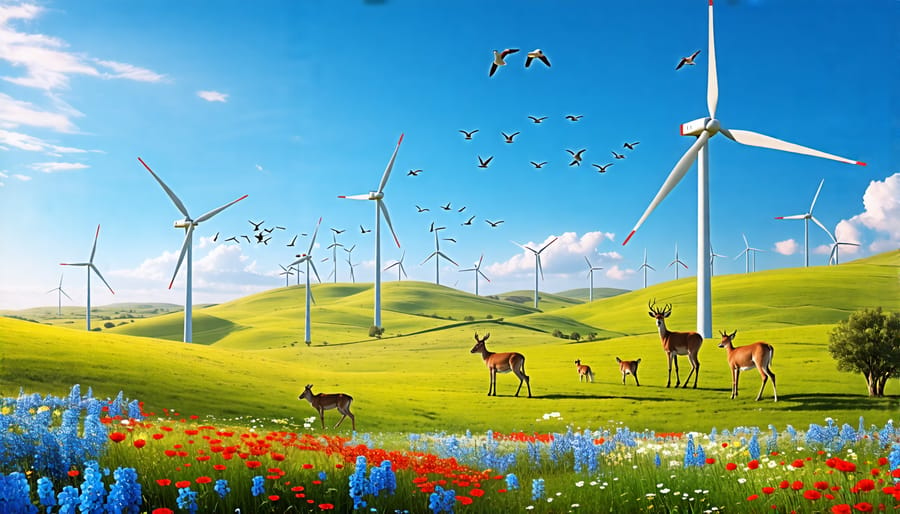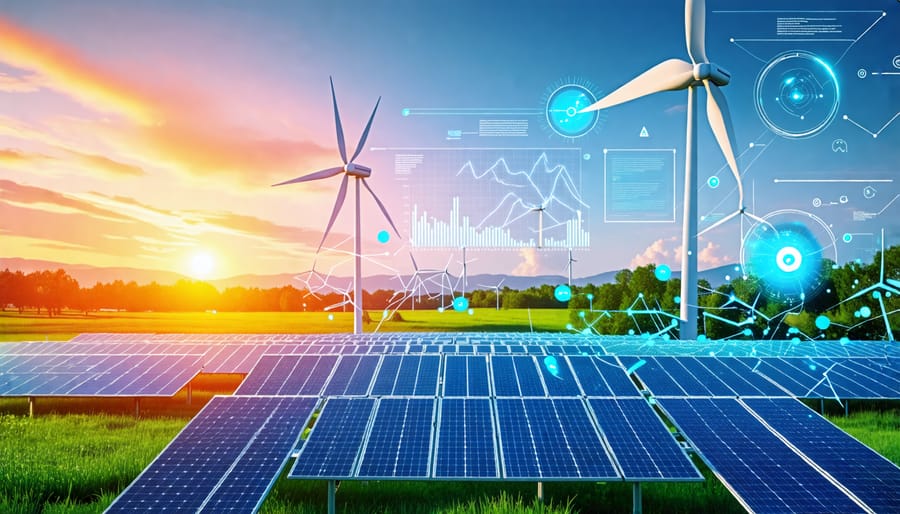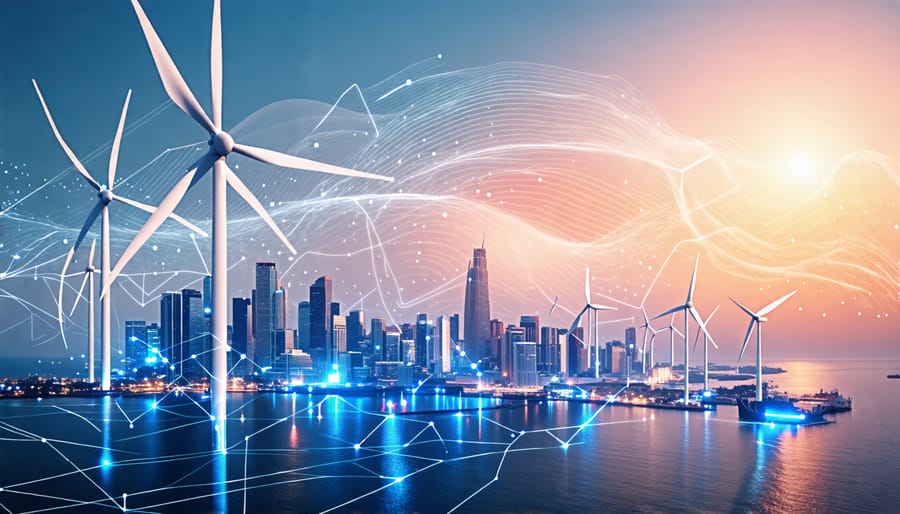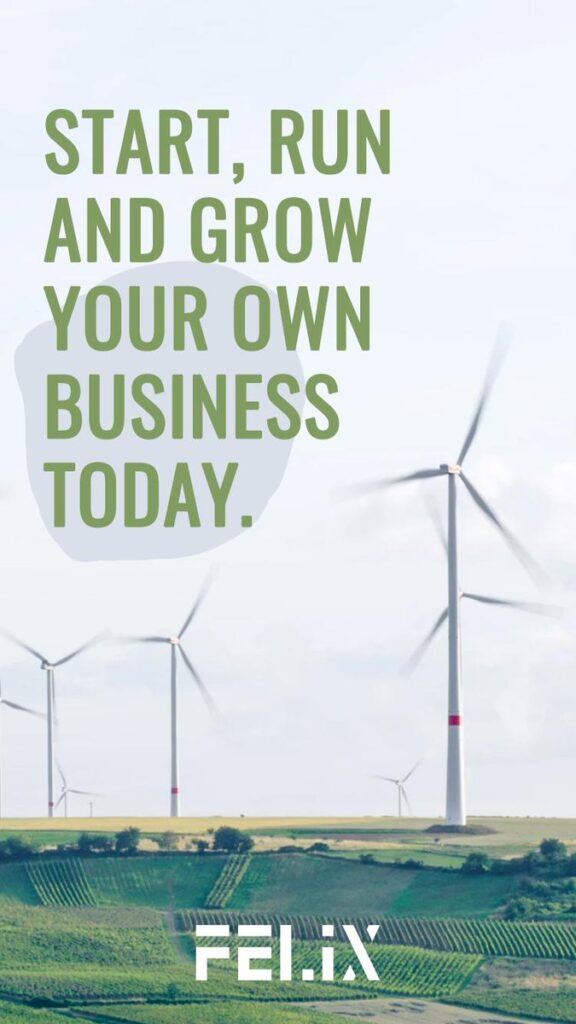Explore the environmental benefits of wind energy by understanding its role in reducing carbon emissions and air pollution. Examine case studies where communities have successfully harnessed wind power to create sustainable energy solutions. Consider the challenges of wildlife impact and noise pollution, and learn from experts about innovative solutions that enhance ecological balance. Dive into how policy-makers can support wind energy advancements through incentives and regulations that promote environmental harmony. Engage with real examples highlighting the transition to a greener future powered by wind energy.
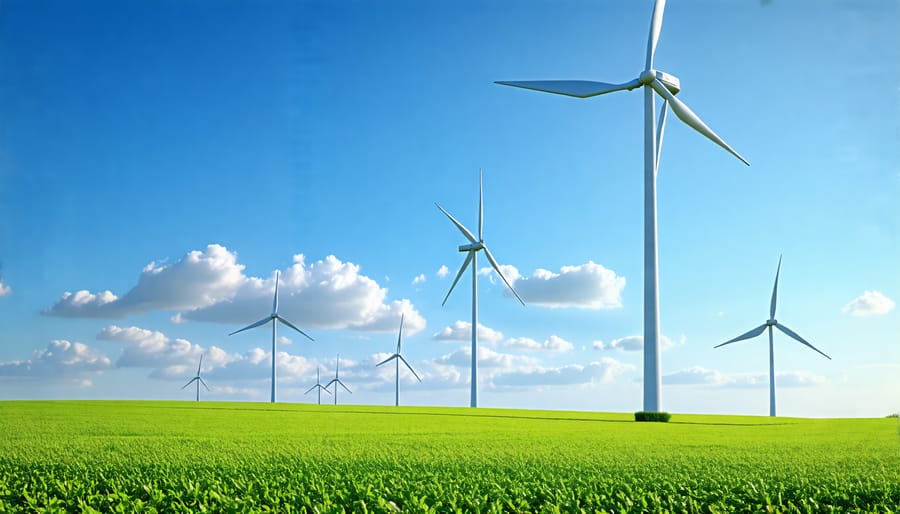
The Environmental Benefits of Wind Energy
Reducing Carbon Emissions
Wind energy dramatically reduces carbon emissions, offering a sustainable alternative to fossil fuels that pollute the atmosphere with greenhouse gases. Unlike coal or natural gas plants, wind turbines generate electricity without burning fuel, eliminating carbon dioxide emissions during operation. According to a real-life case study from Texas, the state known for its significant wind energy deployment, a single megawatt-hour of electricity generated from wind helps cut down approximately 0.65 tons of carbon emissions compared to coal-fired electricity. This significant reduction contributes to cleaner air and a healthier planet, aligning with global efforts to combat climate change. Consider the expert insights from Dr. Jane Wilson, a renewable energy researcher, who emphasizes that scaling up wind energy is crucial for achieving carbon-neutral goals. Her analysis highlights how widespread wind energy adoption could significantly lower reliance on fossil fuels, supporting environmental sustainability while fostering energy independence. By embracing this renewable resource, we take a hopeful step toward a greener, more resilient future.
Sourcing Energy Sustainably
Wind energy stands out as a beacon of sustainable energy due to its inherent renewability. As a resource harnessed from natural wind patterns, it doesn’t deplete over time, making it a perpetual source of power as long as the wind blows. This endless availability positions wind energy as a cornerstone in the global transition towards sustainable futures. Unlike fossil fuels, wind energy generates electricity without greenhouse gas emissions, thereby playing a crucial role in combating climate change. An exemplary case of successful implementation is found in Denmark, where wind energy not only meets substantial domestic energy demands but also contributes significantly to its energy exports. Additionally, offshore wind farms, such as those along the British coast, showcase how strategic placement can maximize output while minimizing land use issues. With continuous advancements in turbine technology increasing efficiency and reducing costs, wind energy remains a compelling and environmentally friendly solution for powering the planet sustainably, offering hope for a greener future.
Supporting Biodiversity
Responsibly-sited wind farms, both onshore and offshore wind farms, can play a vital role in supporting biodiversity. By carefully selecting locations away from critical habitats and migration paths, wind energy projects can coexist harmoniously with local wildlife. Successful examples exist, such as initiatives where wind farm developers collaborate with environmental experts to monitor and mitigate potential impacts on birds and bats. Additionally, wind farms can have a positive impact on neglected land, transforming it into conservation zones due to restricted public access, thereby fostering new habitats and promoting biodiversity recovery.
Environmental Concerns and Challenges
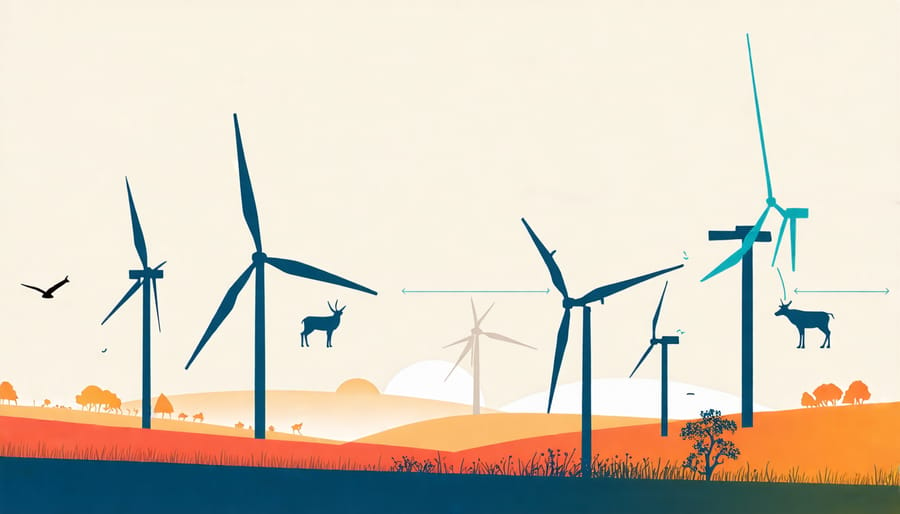
Impact on Local Wildlife
Wind energy is an increasingly popular renewable resource, but it also raises concerns about its impact on bird populations and local wildlife, especially birds and bats. Wind turbines, while beneficial for reducing greenhouse gas emissions, can pose risks to these creatures, leading to collisions and habitat disruptions. However, the industry is actively working on mitigation strategies to minimize these effects. For instance, selective turbine placements away from key habitats have proven effective in reducing bird fatalities. Technological advancements, such as radar systems and ultrasonic deterrents, are also being implemented to detect and protect at-risk species like bats. Real-life case studies show that collaborative efforts between wind farm developers and wildlife experts have led to innovative solutions, ensuring a harmonious coexistence. As our understanding and technology improve, we remain optimistic that wind energy can be both a clean power source and a guardian of biodiversity.
Land Use and Aesthetic Impact
Wind farms typically require significant land areas, yet much of this space can still be used for agriculture or grazing, allowing dual-use land comes with clear benefits. According to a study by the National Renewable Energy Laboratory, wind farms might only use 1–2% of the land for turbine foundations, roads, and other infrastructure. However, their visual impact on landscapes can pose challenges. For instance, the rolling green hills of California or the scenic coastlines of Scotland offer strikingly different aesthetics when wind turbines are introduced. Yet, this change in landscape can be a symbol of forward-thinking energy solutions. A compelling example can be seen in Denmark, where community wind farms have fostered local economic benefits and tourism, illustrating successful integration into aesthetic environments. Experts suggest that thorough consultation with local communities and careful planning can mitigate visual concerns, making wind energy an achievable balance of landscape preservation and sustainable progress.
Noise Pollution
Wind energy, while largely beneficial for the environment, poses challenges, such as noise pollution from wind turbines. These towering structures generate a whooshing sound as blades slice through the air, and mechanical noise from turbines’ internal components. While noise levels are generally akin to a household refrigerator, the proximity of turbines to residential areas can lead to disturbances, particularly in quiet, rural settings. In some cases, this has led to community opposition and sparked debates about appropriate setback distances from homes.
A notable example is the case of residents in certain rural areas who reported disruptions to sleep and overall tranquility, prompting studies to assess health impacts. Expert interviews reveal no direct links between turbine noise and adverse health effects, yet the subjective nature of noise perception can influence quality of life. To address concerns, developers are exploring innovative turbine designs and improved siting practices to minimize disruption. With community engagement and careful planning, solutions are emerging, ensuring the benefits of wind energy are harmoniously integrated into communities.
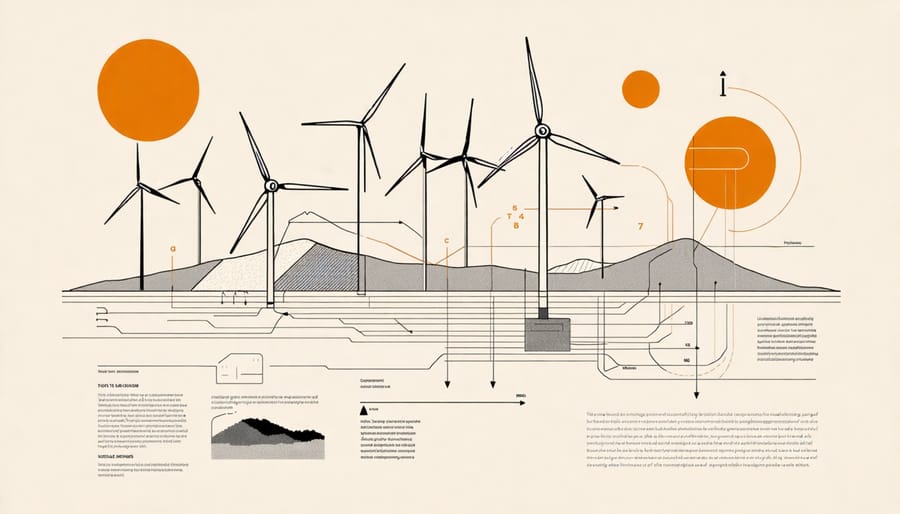
Technological Innovations and Solutions
Advances in Turbine Design
In recent years, advances in turbine design have significantly bolstered the environmental credentials of wind energy. Modern turbines are larger and more efficient, capturing more wind energy with fewer installations, thereby minimizing land use and habitat disruption. These cutting-edge designs employ lightweight, durable materials and innovative blade shapes, enhancing performance and reducing the carbon footprint of manufacturing and maintenance.
Engineers are also integrating noise-reduction technology, addressing one of the common concerns associated with wind farms. Additionally, new turbine models feature innovations that deter bird and bat collisions, such as ultrasonic “chirping” mechanisms and distinct visual patterns that enhance visibility. Offshore wind farms are another breakthrough, exploiting consistent ocean winds without impinging on terrestrial ecosystems.
These technological strides, driven by robust research and development, underscore wind energy’s potential as a sustainable and environmentally friendly solution. As design improvements continue, the synergistic benefits of efficiency and ecological conservation position wind energy as a pivotal element in the global transition to clean energy.
Noise and Wildlife Management Technologies
Innovative noise and wildlife management technologies are playing a crucial role in making wind energy more harmonious with the environment. One noteworthy advancement is the development of advanced turbine blade designs that significantly reduce noise pollution. These designs incorporate serrated edges and specialized materials that dissipate sound waves, creating a quieter operational profile without compromising on efficiency. An inspiring case study from a wind farm in Texas highlights how these quieter turbines have successfully diminished noise complaints from nearby residents, fostering a more positive community reaction to local wind projects.
In terms of wildlife protection, new radar and camera systems are being implemented to monitor bird and bat activity around wind farms. These systems detect animal presence and adjust turbine operations to minimize collision risks, effectively creating a safer environment for local wildlife. A project in Norway is utilizing this technology to safeguard migratory birds, achieving a remarkable 70% reduction in impacted bird populations. Through such cutting-edge solutions, the wind energy sector is demonstrating a strong commitment to preserving biodiversity while advancing sustainable power generation.
Case Studies and Real-World Examples
The story of Denmark’s Middelgrunden Offshore Wind Farm is a prime example of wind energy’s potential for environmental benefits. Built just off the coast of Copenhagen, this collaborative project between a local utility and community investors not only reduced carbon emissions dramatically but also paved the way for community engagement in renewable energy solutions. Operating since 2001, it generates enough electricity to power thousands of homes annually, illustrating the tangible benefits of wind energy for both people and the planet.
In the United States, the Alta Wind Energy Center in California exemplifies how large-scale wind projects can be both successful and instructive. As one of the largest in the world, it showcases how efficient design and strategic placement can minimize wildlife disruption while significantly contributing to renewable energy output. While such ventures face challenges like initial costs and community acceptance, these case studies highlight wind energy’s role in achieving sustainable energy goals, offering valuable insights into balancing renewable ambitions with ecological considerations.
Conclusion
In conclusion, wind energy emerges as a pivotal player in the quest for sustainable energy, offering both profound benefits and notable challenges. On the positive side, wind power is a clean, renewable source that significantly reduces carbon emissions, helping to combat climate change. Additionally, it has the potential to create jobs and stimulate economic growth in regions adopting this technology. Real-life case studies, such as the successful integration of wind farms in Denmark, demonstrate its viability and effectiveness.
Despite these advantages, challenges like wildlife disruption and the intermittent nature of wind pose concerns that need addressing. However, innovative solutions, such as improved turbine designs and advancements in energy storage technology, are mitigating these issues, further strengthening wind energy’s role in a sustainable future. By striking a balance between these pros and cons, wind energy not only exemplifies a commitment to environmental stewardship but also stands as a testament to human ingenuity and resilience in tackling the climate crisis.

